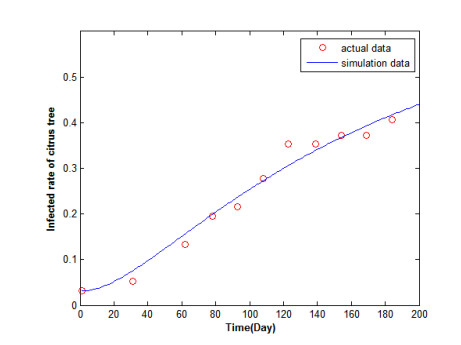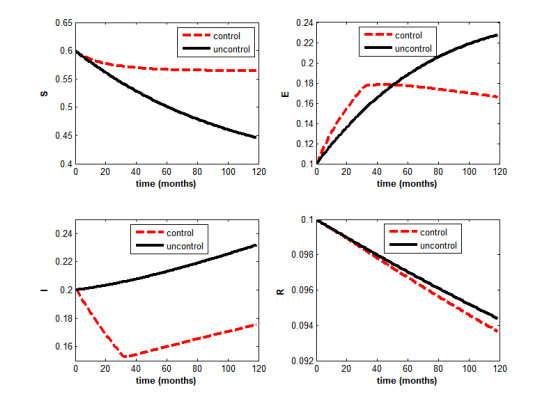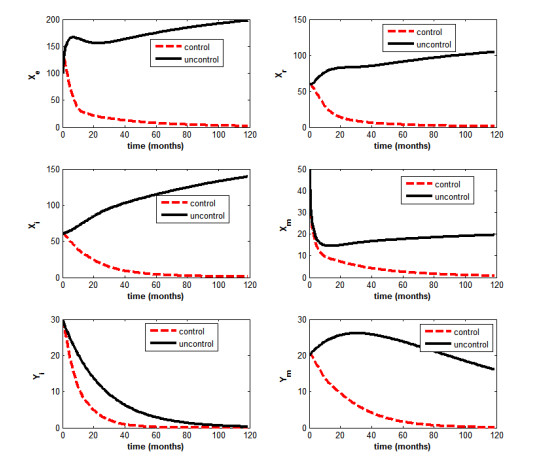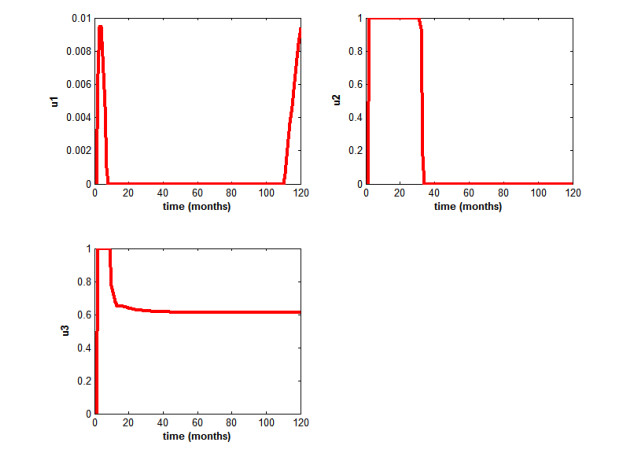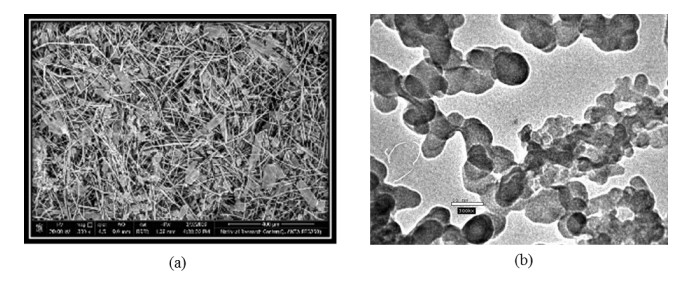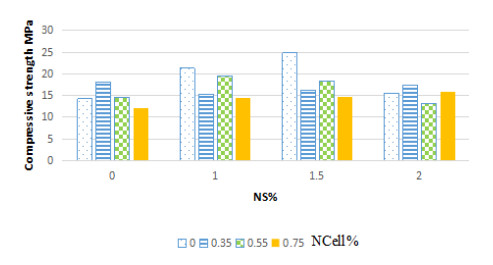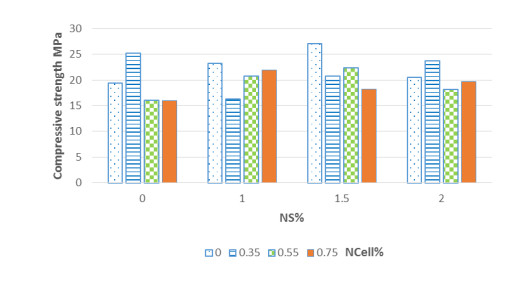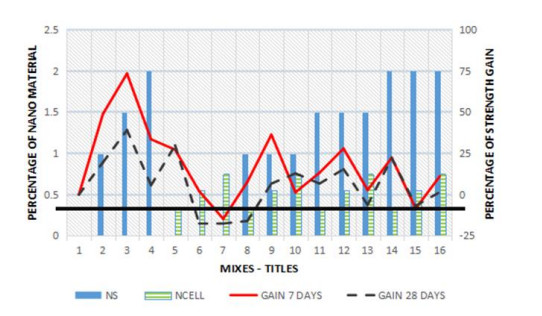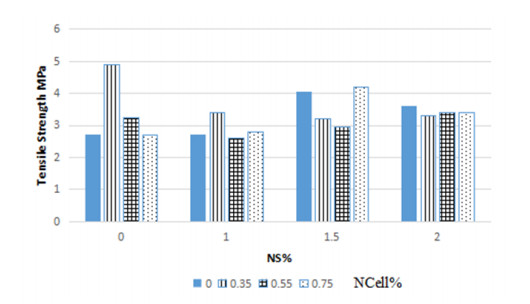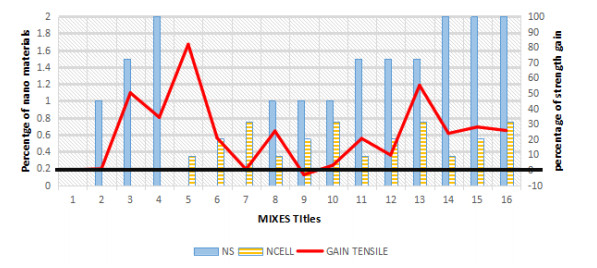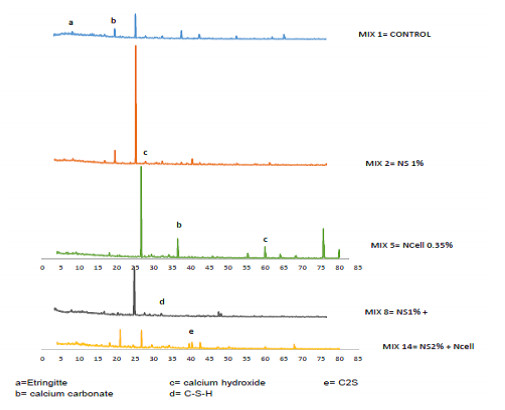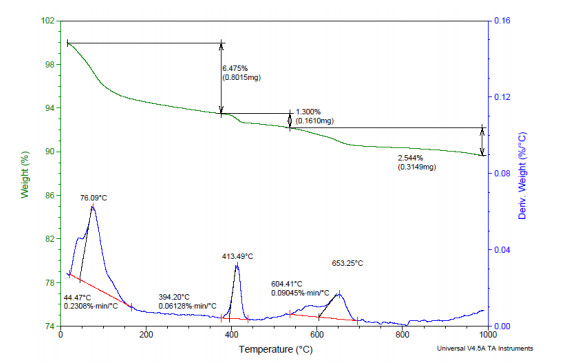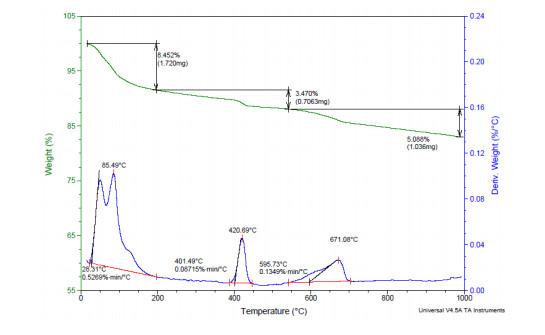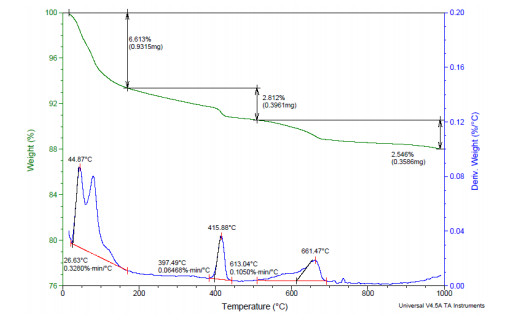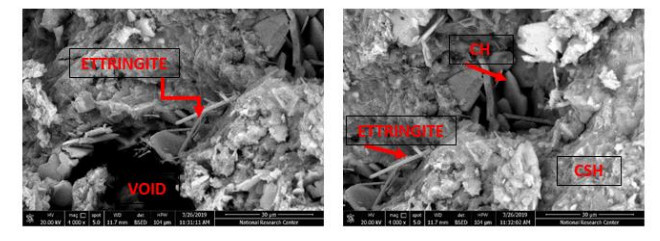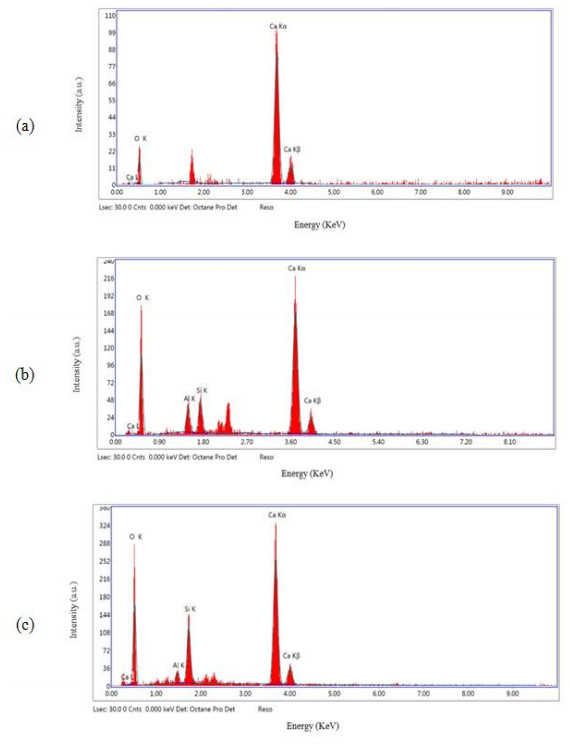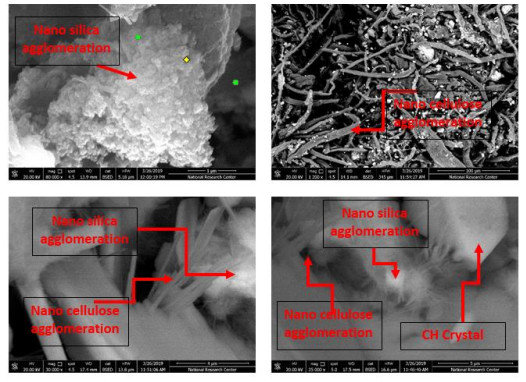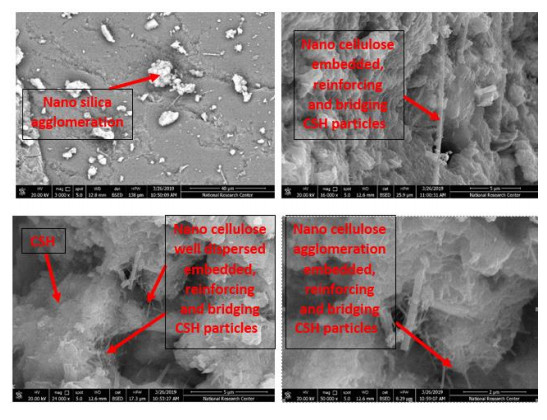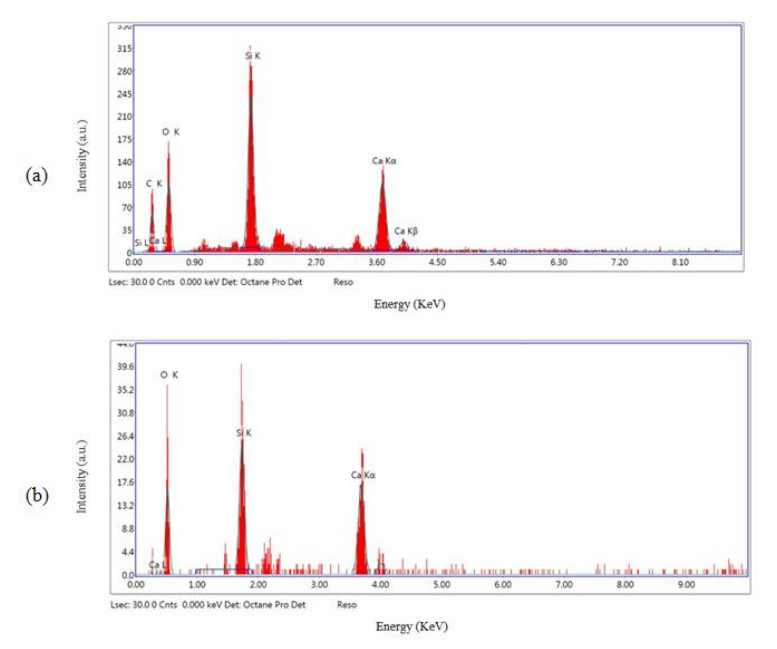The utilization of cellulose nano fibers (NCell) as reinforcement to cement composites may account for enhancing particle packing and decreasing the crack growth at the nano level. Besides that, their high specific surface area can improve the bond between the cement hydration products. nano silica particles can also influence the performance of fiber reinforced cement composites through increasing the calcium-silicate-hydrate gel content, as well as enhancing the fiber to matrix interface cohesion. The aim of this investigation is to evaluate the effects of different contents of nano silica particles (0, 1, 1.5, and 2% by weight of cement) on the mechanical properties, and microstructure of cement composites reinforced with various contents of nano cellulose fibers (0, 0.35, 0.55, and 0.75% by weight of cement). The results out of studying such nano systems revealed that the addition of the NCell particles separately, helped in improving the tensile strength by about twice the value of the control mix when appropriate content of NCell was incorporated (0.35%). Moreover, the microstructural analyses demonstrated the effectiveness of nano silica particles to modify the transition zone between the nano cellulose fiber and the cementitious matrix and subsequently allowing greater reinforcement efficiency especially when external compression or tensile forces were transferred to the composite.
1.
Introduction
Huanglongbing (HLB), more commonly known as citrus greening disease, is one of the most dangerous and devastating diseases of citrus worldwide [1,2]. Two decades ago, it invaded the Western Hemisphere, primarily Florida and Brazil, where it has spread rapidly and caused major damage to global citrus production. It is estimated that citrus acreage in Florida has decreased by 40% and production by 49% since their historical peaks, all of which occurred in the last 20 years [3]. Up to 2015, 20% of Brazil's commercial citrus species has been infected with HLB, and the disease caused great damage to citrus industry by shortening tree lifespan and poor yield and quality [4]. In S˜ao Paulo, 64.1% of the commercial citrus blocks and 6.9% of the citrus trees were affected by HLB in 2012 [5]. In addition, Ganzhou is the top citrus producing area in Jiangxi Province, China, with an annual production of approximately 1.2 million tons [6,7]. However, the producing-area has also suffered from the widespread out of HLB and the output has significantly decreased in recent years [8]. The citrus acreage in Ganzhou had decreased from 2.48 million acres in 2013 to 1.00 million acres in 2018.
HLB is caused by phloem-restricted bacteria of the Candidatus Liberibacter group, which can be transmitted by two species of citrus psyllids, the Asian citrus psyllid (ACP), Diaphorina citri Kuwayama, and the African citrus psyllid, Trioza erytrae [3]. ACP is divided into eggs, 1st through 5th nymphal instars and adults [9]. The five nymphal instars of ACP can be differentiated by their distinct morphological characteristics [10]. Adults and nymphs are capable of acquiring the HLB pathogen after feeding on an infected plant for 30 min or longer [11]. Although the nymphs hardly move, they soon become Las-carrying (Candidatus Liberibacter asiaticus) adults with the ability to fly and transmit Las to other citrus plants. Thus the control period of vector psyllid should include the nymphal stages [10]. The results from [10] reported that psyllids can carry Las in either adult or nymphal stages, expect in the 1st and 2nd instars, the 3rd through 5th instars have stronger transmission ability than adults.
Generally a healthy citrus tree is inoculated by infected nymphs and adults, there is an incubation period in which the tree exhibits no symptoms but may act as a source of the disease [2]. The survey results from [12,13] indicated that the incubation period from grafting to development of HLB symptoms is 3 to 12 months under greenhouse conditions. Since incubation period is long and diagnosis is difficult, citrus trees can not be easily found in time after infection. This issue reduces the effectiveness of control strategy in which infected trees are removed to eliminate sources of HLB [14].
Recently, mathematical modeling has become an important and useful tool in understanding the epidemiology of vector-transmitted plant pathogens [15,16,17,18,19]. For citrus HLB, a few mathematical models currently exist which analyze how HLB spreads within individual trees [20], within a citrus grove [21,22,23,24,25], or from grove to grove [26]. In [21], the authors reviewed how mathematical models have yielded useful insights into controlling disease spread for vector-borne plant diseases, especially HLB. Note that, for citrus psyllid, different stages have different biological characters, such as reproductive potential, growth, temperature tolerance, transmission efficiency. Therefore, it is very necessary to consider the stage structure of psyllid in mathematical model, including eggs, the 1st and 2nd nymphal instars, the 3rd through 5th nymphal instars and adults. However, the stage structure of psyllid has not been discussed in the previous HLB models. Motivated by the preceding discussion, our first purpose of this paper is to formulate and investigate a HLB model, in which the incubation period of citrus tree and the stage structure of psyllid are taken into consideration.
There is no good source of genetic resistance to HLB in the genus citrus, and the disease cannot be cured once the trees are infected [2,27]. Current programs for HLB have focused on nutrient solution injection to reduce the infection of the bacteria, removal of infected trees to reduce sources of the disease and insecticide spraying control of the psyllid vector and planting with HLB-free nursery stock [2]. The second aim of this paper is to achieve awareness about the most desirable technique for minimizing the transmission of HLB by using the optimal control theory.
In this paper, different from the previous simple classification of psyllid into susceptible and infected populations, we consider that citrus psyllid in different stages have different abilities and ways to transmit HLB. Based on the above facts, in the next section, we establish a stage-structured HLB model, and obtain the basic reproductive number R0 of the model. In Section 3, we obtain the equivalent threshold condition T0 of the basic reproductive number R0, and prove extinction of the disease when R0≤1 while persistence of the disease when R0>1. In Section 4, we apply the optimal control technique to minimize the population of infected citrus trees, dead trees and total number of vector population. Different control strategies should be used for the elimination of infection in the population of citrus trees. In Section 5, we use numerical simulation to demonstrate and support the theoretical results. In the last section, we give a brief conclusion.
2.
A mathematical model and the basic reproductive number R0
2.1. Model formulation
In this subsection, Citrus HLB model where transmission is via vector psyllids is formulated. The notation used in the mathematical model includes four states for citrus tree population. S denotes susceptible trees (individuals who can be infected by disease) and R represents dead trees. Due to the latency delay we split the infected trees into a latent stage, E (individuals who infected and asymptomatic but no infectious) and an infectious stage, I (individuals who have the ability to transmit the disease to others). Let N(t) be the total numbers of citrus tree population at time t in a grove, that is, N(t)=S(t)+E(t)+I(t)+R(t). Based on the fact that 3rd through 5th nymphal instars can transmit HLB, the citrus psyllid population is divided into six state variables. We let Xe represent eggs (produced by susceptible adults of psyllids), Xr denote 1st and 2nd nymphal instars (individuals who do not have the ability to transmit the disease to other susceptible trees), Xi and Yi denote 3rd through 5th susceptible and infected nymphal instars, respectively. Xm and Ym denote susceptible and infected adults of psyllid, respectively. We assume that the grove is subject to roguing and replanting management strategy. Moreover, we ignore the natural mortality rate of the citrus tree. The model flow diagram is depicted in Figure 1. Considering HLB transmission between citrus trees and psyllids, we establish the following HLB model.
In model (1), dead trees are rogued at a rate ρ and the corresponding spots are replanted with new trees. We assume that a proportion f∈[0,1] of the newly planted trees will be healthy and a proportion 1−f will become infected to a latent stage immediately. We also assume η1,γ1,γ3 and γ4 are the conversion rates, η2 is the disease-induced mortality rate of tree, r denotes oviposition rates of susceptible adult psyllid, d1 and d2 represent the natural mortality rates of eggs and 1st through2nd nymphal, respectively, d3 is the natural mortality rate of 3rd through 5th nymphal, d4 is the natural mortality rate of adult psyllid. Let α1 be the infection rate from 3rd through 5th infected nymphals to susceptible trees, α2 be the infection rate from infected trees to 3rd through 5th susceptible nymphals, β1 be the infection rate from infected adult psyllid to susceptible trees, and β2 be the infection rate from infected trees to susceptible adult psyllids.
Subject to the restriction dN(t)dt=dS(t)dt+dE(t)dt+dI(t)dt+dR(t)dt≡0, without loss of generality, let N(t)=1, and now S+E+I+R=1. Here S, E, I and R are defined separately as susceptibility rate, latent rate, infection rate and removal rate, respectively. Thus, system (1) can be reduced to the form:
From biological considerations, we study (2) in the closed set Γ={(S,E,I,R,Xe,Xr,Xi,Xm,Yi,Ym)∈R10|S,E,I,R≥0,S+E+I+R=1,Xe,Xr,Xi,Xm,Yi,Ym≥0}, which is invariant set under nonnegative initial conditions. It is easy to proof the boundedness of the solutions of system (2). We omit it.
The system (2) always exists a disease-free equilibrium (DFE) P0=(S0,0,0,0,X0e,X0r,X0i,X0m,0,0), where
2.2. The basic reproductive number R0
The basic reproductive number R0 of an infectious disease is a fundamental concept in the study of disease transmissions. It represents the average number of secondary cases produced, in a completely susceptible population, by a typical infective individual [28]. If R0<1, then on average an infected individual produces less than one new infected individual over the course of its infectious period, and the infection cannot grow. Conversely, if R0>1, then each infected individual produces, on average, more than one new infection, and the disease can invade the population [29]. Diekmann et al. [29] define R0 as the spectral radius of the next generation matrix. That is, we rewrite the vector field of (2) as
and Vi(x)=V−i(x)−V+i(x), where x=(E,I,R,Yi,Ym,S,Xe,Xr,Xi,Xm),
F,V are defined as
where ˆP0=(0,0,0,0,0,S0,X0e,X0r,X0i,X0m). Thus
Obviously, −V is cooperative. By simple computation, we get
The eigenvalues of FV−1 are determined by
It is easy to obtain that the spectral radius of FV−1 is:
where
3.
Main results
3.1. An equivalent threshold quantity T0
In order to give a more reasonable biological interpretation, we give an equivalent threshold quantity as
where R1 and R2 are defined in (4). The biological meaning of quantity T0 can be explained as follows. Suppose that a single infected tree in stage E is introduced into a completely susceptible grove. The average number of secondary infections resulting from the psyllid in stage Xi (that is susceptible 3rd through 5th nymph) contact infected tree is,
Further, the average number of secondary infections resulting from the psyllid in stage Xm (that is susceptible adult psyllid) contact infected tree is,
The citrus tree will necessarily be removed in the R stage and will on average produce 1−f newly infected E trees. Thus the expected number of secondary infections is exactly T0. In the following, we will prove the equivalence of T0 and R0 for the local stability of the DFE P0.
Theorem 3.1. (ⅰ) R0<1 if and only if T0<1.
(ⅱ) T0<1 if and only if all eigenvalues of the Jacobian matrix of system (2) evaluated at DFE P0 have negative real parts.
Proof. It follows from (3) that the basic reproductive number R0 is the largest positive root of
Clearly, the leading coefficient of ρ(λ) is positive, and thus R0<1 if and only if
Therefore, ρ(1)>0 is equivalent to T0<1 and the first assertion holds.
Next, we want to prove the second assertion. Calculating the Jacobian matrix of system (2) at the DFE P0:
Clearly, J(P0) can be seen as a block matrix of 2×2 and each block is a 5×5 matrix. The eigenvalues are determined by the following characteristic equation of J(P0):
Any root λ of p(λ) with Re(λ)≥0 is also a root of q(λ) defined by
Obviously, q(λ) is monotone increasing in λ when λ>0. It follows from that, since the leading coefficient of p(λ) is positive, we know that p(λ) has no positive real roots if and only if q(0)>0, which is equivalent to
that is, T0<1. Next, we need to prove all complex eigenvalues of J(P0) have negative real parts. Suppose the contrary. Then we define G(λ)=1−q(λ) and suppose p(λ)=0 with Re(λ)≥0 and Im(λ)≠0. Then G(λ)=1 where
We claim |G(λ)|<G(Re(λ)). From (5), we have
where Υ=(Re(λ)+η1)(Re(λ)+η2), and the second inequality is strict since Im(λ)≠0. Then we get T0<1⇔q(0)>0⇔G(0)<1, which implies G(Re(λ))<1 since G is decreasing in λ. Thus |G(λ)|<G(Re(λ))<1. This contradicts G(λ)=1.
3.2. Extinction of the disease when R0<1
Theorem 3.2. If R0<1, then the DFE P0 of system (2) is globally attractive.
Proof. Note that R0<1 implies that f>0. Suppose lim supt→∞E(t)=m>0. Then for every ε>0 there exists τ1>0, such that
It follows from the third equation of system (2) and (6) that
for all t≥τ1. Then there exists τ2>τ1 such that
for all t≥τ2. It follows from the fourth equation of system (2) and (7) that
for all t≥τ2. Thus there exists τ3>τ2 such that
Further, from system (2), we have
Considering the auxiliary system of (9):
Clearly, (10) is a quasi-monotone system, and the unique positive equilibrium (X0e,X0r,X0i,X0m) of system (10) is globally asymptotically stable if R0<1. By comparison theorem in differential equations, we obtain that there exists τ4>τ3 such that
for all t≥τ4. Substituting (7) and (11) into the ninth equation of system (2), we have that
for all t≥τ4. Then there exists τ5>τ4 such that
for all t≥τ5. Substituting (7), (11) and (12) into the last equation of system (2), we get that
for all t≥τ5. Thus there exists τ6>τ5 such that
for all t≥τ6. Now, substituting (8), (12) and (13) into the second equation of system (2), we get that for t≥τ6
Then there exists τ7>τ6 such that
for all t≥τ7. Letting ε→0, the inequality (14) becomes
It follows from Theorem 3.1 that, R0<1 implies T0<1. Thus lim supt→∞E(t)<m, a contradiction. So m=0. Following (7), (8), (12)-(14) and the nonnegativity of the solutions, we have limt→∞E(t)=limt→∞I(t)=limt→∞R(t)=limt→∞Yi(t)=limt→∞Ym(t)=0. By the theory of asymptotically autonomous semiflows (see [30]), we have
Therefore all nonnegative solutions converge to the DFE P0.
3.3. Persistence of the disease when R0>1
It follows from Theorem 3.1 that DFE is locally asymptotically stable as R0<1, while DFE is unstable as R0>1. Theorem 3.2 in subsection 3.2 illustrates the global stable result of DEF for the case R0<1.
Theorem 3.3. If R0>1, then the disease is uniformly persistent for system (2). That is, there is a positive constant ε0>0, such that
Proof. Denote ˜K={(S,E,I,R,Xe,Xr,Xi,Xm,Yi,Ym)∈R10+}, K0={(S,E,I,R,Xe,Xr,Xi,Xm,Yi,Ym)∈˜K:S≥0,E>0,I>0,R>0,Xe≥0,Xr≥0,Xi≥0,Xm≥0,Yi>0,Ym>0}, and ∂K0=˜K∖K0. Let u(t,t0,x0) be the unique solution of system (2) with the initial value x0=(S0,E0,I0,R0,Xe0,Xr0,Xi0,Xm0,Yi0,Ym0) at time t0.
Define poincaré map P:˜K→˜K associated with system (2) as follows:
Set
We claim that
Obviously, {(S,0,0,0,Xe,Xr,Xi,Xm,0,0)|S≥0,Xe≥0,Xr≥0,Xi≥0,Xm≥0}⊆M∂. Next, We want to show
If (16) does not hold, then there exists a point (S0,E0,I0,R0,Xe0,Xr0,Xi0,Xm0,Yi0,Ym0)∈M∂∖{(S,0,0,0,Xe,Xr,Xi,Xm,0,0)|S≥0,Xe≥0,Xr≥0,Xi≥0,Xm≥0}. Next, for the five initial values E0,I0,R0,Yi0, and Ym0, we divided into four cases to discuss.
Case (i) One initial value is equal to zero, and the others are lager than zero. Without loss of generality, we choose E0=0,I0>0,R0>0,Yi0>0 and Ym0>0. It is obvious that S(t)>0,Yi(t)>0,Ym(t)>0 and R(t)>0 for any t>t0. Then from the second equation of system (2), we get dE(t)dt|t=t0=α1Yi(t0)S(t0)+β1Ym(t0)S(t0)+(1−f)ρR(t0)>0. Thus, (S,E,I,R,Xe,Xr,Xi,Xm,Yi,Ym)∉∂K0 for 0<t−t0≪1. This is a contradiction. The other subcases can be similarly proved.
Case (ii) Two initial values are equal to zero, and the others are larger than zero. Let E0=I0=0,R0>0,Yi0>0 and Ym0>0. It is obvious that S(t)>0,Yi(t)>0,Ym(t)>0, and R(t)>0 for any t>t0. From the second equation of system (2), we get dE(t)dt|t=t0=α1Yi(t0)S(t0)+β1Ym(t0)S(t0)+(1−f)ρR(t0)>0. So E(t)>0 for 0<t−t0≪1. This implies that I(t)>0 for 0<t−t0≪1. Therefore, we have (S,E,I,R,Xe,Xr,Xi,Xm,Yi,Ym)∉∂K0 for 0<t−t0≪1. This is a contradiction. Similarly, we can prove the other subcases.
Case (iii) Three initial values are equal to zero, and the others are larger than zero. Set E0=I0=R0=0,Yi0>0 and Ym0>0. Clearly, S(t)>0,Yi(t)>0 and Ym(t)>0, for any t>t0. It follows from the second equation of system (2) that dE(t)dt|t=t0=α1Yi(t0)S(t0)+β1Ym(t0)S(t0)>0. So E(t)>0 for 0<t−t0≪1. It follows from the third and fourth equations of system (2) that I(t)>0 and R(t)>0 for 0<t−t0≪1. Therefore, (S,E,I,R,Xe,Xr,Xi,Xm,Yi,Ym)∉∂K0 for 0<t−t0≪1. This is a contradiction. Similarly, we can prove the other subcases.
Case (iv) Four initial values are equal to zero, and the other is larger than zero. Set E0=I0=R0=Yi0=0 and Ym0>0. It is easy to see that S(t)>0 and Ym(t)>0 for all t>t0. From the second equation of system (2), we can get dE(t)dt|t=t0=α1Yi(t0)S(t0)>0, for 0<t−t0≪1. So E(t)>0 for 0<t−t0≪1. It follows from the third, fourth and ninth equations of system (2) that I(t)>0, R(t)>0 and Yi(t)>0 for 0<t−t0≪1. Thus, (S,E,I,R,Xe,Xr,Xi,Xm,Yi,Ym)∉∂K0 for 0<t−t0≪1. This is a contradiction. Similarly, we can prove the other subcases.
Thus
In the following, we proceed by contradiction to prove that there exists ξ>0 such that
where P0=(S0,0,0,0,X0e,X0r,X0i,X0m,0,0).
It follows from Theorem 2 in [31] that R0>1⟺ρ(FV−1)>1⟺ρ(exp(F−V))>1. Therefore, if R0>1, we can choose ε1>0 sufficiently small such that
where
If (17) does not hold, then for any ζ>0, we have
Without loss of generality, suppose that
By the continuity of the solution with respect to initial values, we have that there exists sufficiently small ε1>0 such that
For any t≥t0, there exists an integer l∈Z+ such that t−t0=l+ˆt, where ˆt∈[0,1). It follows from (19) that
Therefore, we have
From system (2) and inequality (20), we get
Obviously, system (21) is a quasi-monotonic system. Consider the following comparison system:
where ˆZ(t)=(ˆE(t),ˆI(t),ˆR(t),^Yi(t),^Ym(t))T and
By [32], we know that there exists a positive vector v such that ˆZ(t)=vexp(ηt) is a solution of system (22), where η=lnρ(exp(F−V−Mε1)). From (18), we can get η>0 and thus ˆZ(t)→∞ as t→∞, that is, ˆE(t)→∞, ˆI(t)→∞, ˆR(t)→∞, ^Yi(t)→∞ and ^Ym(t)→∞ as t→∞. According to the comparison theorem in differential equations, we can easily obtain that
This contradicts with the boundedness of the solutions. Thus, we have proved that (17) holds and P is weakly uniformly persistent with respect to (K0,∂K0).
Obviously, the poincaré map P has a global attractor P0. P0 is an isolated invariant set in ˜K and WS(P0)⋂K0=∅, and it is acyclic in M∂. Every solution in M∂ converges to P0. According to Zhao [33], we derive that P is uniformly persistent with respect to (K0,∂K0). This implies that the solution of system (2) is uniformly persistent with respect to (K0,∂K0), that is, (15) holds.
4.
Optimal control problem
Optimal control theory has been used to explore optimal control strategies for various infectious diseases [34,35,36]. The purpose of this section is to seek an optimal integrated strategy to prevent the spread of citrus HLB. In the following, we begin with the presentation of the optimal control problem for the transmission dynamics of HLB in order to derive nutrient solution injection, removal of infected trees and insecticide spraying strategies with minimal implementation cost. We will show that it is possible to implement control techniques while minimizing the cost of implementation of such measures.
In the host citrus trees population, the associated force of infections are reduced by factors of (1−u1), where u1 measures the precaution effort of nutrient solution injection. The control variable u2 represents the removing of infected trees. The control variable u3 shows the eradication effort of insecticide spraying. It follows that the reproduction rate of psyllid population (including egg, nymph, adult stages) is reduced by a factor of (1−u3). Based on the assumptions and extensions mentioned above, system (2) with control strategy can be improved as following forms:
subject to nonnegative initial conditions, here r0 is a conversion rate.
For the optimal control problem of (23), we consider the control variables u(t)=(u1,u2,u3)∈U relative to the state variables S,E,I,R,Xe,Xr,Xi,Xm,Yi,Ym where control variables are bounded and measured with
where T represents the control period. Let V be the total number of psyllid population, that is, V=Xe+Xr+Xi+Xm+Yi+Ym. For the control problem, we now define the objective functional as
subject to the control system (23). The objective is to minimize the cost functional (25). That is, the goal is minimizing the number of infected trees, dead trees and psyllid populations and the cost of implementing the control, by using possible minimal control variables ui(t) (i=1,2,3). We choose to model the control efforts via a linear combination of quadratic terms, u2i(t)(i=1,2,3). Further, the constants A1,A2,A3 and B1,B2,B3 represent a measure of the relative cost of the interventions over the interval [0,T]. In order to find an optimal control, u∗1,u∗2,u∗3 such that
where U is defined in (24) and subject to control system (23) with nonnegative initial conditions. Next, we use Pontryagin's Maximum Principle to solve this optimal control problem.
4.1. Existence of the control problem
Following the idea of [37], we prove firstly the existence of the optimal control problem.
Theorem 4.1. For the objective functional J(u1,u2,u3)=∫T0(A1I+A2R+A3V+B12u21+B22u22+B32u23)dt, associated with model (23) defined in U, then there exists an optimal control u∗=(u∗1,u∗2,u∗3), such that J(u∗1,u∗2,u∗3)=minUJ(u1,u2,u3).
Proof. By Theorem Ⅲ.4.1 from [37], we only need to check the following assumptions:
(H1) The set of controls and corresponding state variables is nonempty.
(H2) The control set U is convex and closed.
(H3) Right hand side of each equation in control problem (23) is continuous, bound above by a sum of the bounded control and state, and can be written as a linear function of U with coefficients depending on time and the state.
(H4) There exist constants C1,C2>0 and β>1 such that the integrand of the objective functional L(y,u,t) is concave and satisfies
Obviously, the state variables and the set of control are bounded and nonempty which confirm (H1). Note that the solutions are bounded, so the admissible control set is bounded and convex, which confirms (H2). The system is bilinear in control variables, so it confirms (H3) (since the solutions are bounded). The hypothesis (H4) can be verified as
where C1,C2>0,A1,A2,A3,B1,B2,B3>0,B4>0 and β>0. In view of the result given by Lukes [38], we have that there exists an optimal control strategy (u∗1,u∗2,u∗3) minimizing J(u1,u2,u3).
Next we explore the minimal value of J(u1,u2,u3). To accomplish this, we define the Lagrangian L and Hamiltonian H for the optimal control problem (23) as
and
where X=(S,E,I,R,Xe,Xr,Xi,Xm,Yi,Ym), U=(u1,u2,u3) and λ=(λ1,λ2,λ3,...,λ10).
4.2. Optimal control solution
In this subsection, by using Pontryagin's Maximum Principle [39], we will obtain the optimal solution of the control system (23).
Let u∗1,u∗2 and u∗3 represent the optimal solution of the control problem (26), then there exists a nontrivial vector function λ(t)=(λ1(t),λ2(t),λ3(t),...,λ10(t)) satisfying three equalities:
(ⅰ) the state equation
(ⅱ) the optimality condition
(ⅲ) the adjoint equation
Now, we apply the necessary conditions to the Hamiltonian H given by (27). Following the results in [39], we can obtain the following conclusions.
Theorem 4.2. Let ˆy∗=(ˆS∗,ˆE∗,ˆI∗,ˆR∗,ˆX∗e,ˆX∗r,ˆX∗i,ˆX∗m,ˆY∗i,ˆY∗m) be an optimal solution associated with the optimal control strategy u∗(t)=(u∗1(t),u∗2(t),u∗3(t)) for the optimal control problem (26), then there exists adjoint variables λi,(i=1,2,...,10) satisfying
with transversality conditions
Further, the control u∗1,u∗2,u∗3 are given by
Proof. To determine the adjoint equations and the transversality conditions we use the Hamiltonian (27). The adjoint system results from Pontryagin's Maximun Principle [39].
with λi(T)=0 (i=1,2,⋯,10).
To obtain the characterization of the optimal control given by (28), solving the equations
on the interior of the control set and applying the property of the control space U, we can derive (28) holds.
5.
Numerical simulations
In this section, we use firstly the model (2) to simulate the data on the number of infected citrus trees of Yuan Orchard from June, 2015 to December, 2015. Yuan Orchard is located in Ganzhou, China, which is one of our monitoring sites for citrus HLB. The infected rates of trees I(t) are given in Table 1. Numerical simulation of I(t) is shown in Figure 2. In order to carry out the numerical simulations, we need to estimate the model parameters. We get these parameter values in three ways: some parameter values (η1,η2, r,γ1,γ2,γ3, d1,d2,d3,d4,r0) are obtained from the literature; some parameter values (ρ,f) are estimated; and other parameter values (α1,α2,β1,β2) are fitted by the MATLAB tool fminsearch, which is fitted by calculating the minimum sum of square (MSS) (see [40]):
By using the parameter values in Table 1, we can obtain α1=0.00494month−1,α2=0.00043month−1,β1=0.0097month−1 and β2=0.002258month−1 by fitting in simulations. All parameter values of the model are given in Table 2.
Next, we numerically examine the effect of the optimal control strategy on the spread of citrus HLB in a population of trees and psyllids. In this simulation without control population is labeled with bold line and the control by a dashed line. The weight constant values in the objective functional are A1=800;A2=2000;A3=2;B1=200;B2=1;B3=50. The control u1, u2 and u3 are all used to optimize the objective function J. Figures 3 and 4 showed that the control strategy resulted in a decrease in the number of infected citrus trees I, dead citrus trees R, psyllids at each stage, Xe,Xr,Xi,Xm,Yi and Ym while an increase is observed in the number of susceptible citrus trees S. In Fig. 5, we can observe that the optimal control profile for u1, u2 and u3. Note that parameter values used in the numerical simulations are given in Table 1, and the initial conditions are taken as S(0)=0.6,E(0)=0.1,I(0)=0.2,R(0)=0.1, Xe(0)=100,Xr(0)=60,Xi(0)=60,Xm(0)=50,Yi(0)=30,Ym(0)=20.
6.
Conclusion
In this paper, based on the mechanism and characteristics of citrus HLB transmission, we proposed a vector-borne plant disease model with stage structure in psyllids and studied the effect of intervention strategy in controlling the spread of HLB. We calculated the basic reproduction ratio R0 for the epidemic model, and showed that the disease would die out when R0<1, and the disease would be endemic when R0>1.
Moreover, by using the optimal control theory, we analyzed the intervention strategy, nutrient solution injection, removal of infected trees and insecticide spraying, to determine the optimal integrated strategy. Using the Pontryagin's Maximum Principle, we investigated the existence of the optimal control problem. In addition, we minimized the number of infected citrus trees, dead citrus trees and the total number of psyllid population, by using three control variables. Numerical simulations illustrated the effectiveness of the proposed control problem.
Acknowledgments
The research has been supported by the Natural Science Foundation of China (11561004) and the Key Science and Technology Program of Jiangxi Province (20143ACF60012).
Conflict of interest
The authors declare that there are no conflicts of interest regarding the publication of this paper.
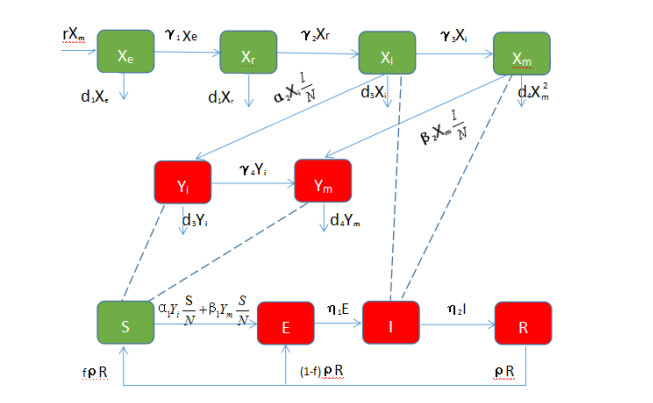









 DownLoad:
DownLoad:
